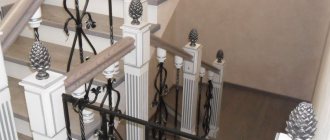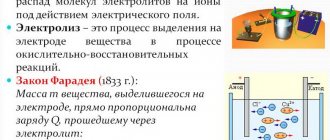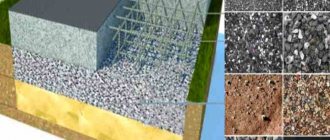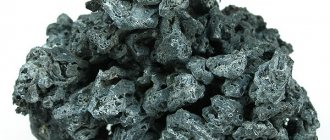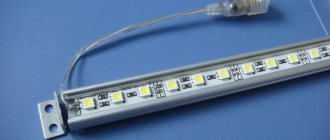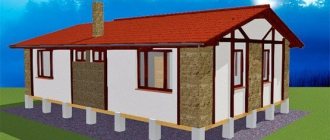Foundation slabs
The technology of reinforcing foundation slabs for low-rise construction of no more than three floors using fiberglass composite reinforcement occurs by replacing metal reinforcement with fiberglass according to the table of equal strength replacement.
Correct replacement with fiberglass reinforcement is guaranteed to lead to significant savings in money, because Fiberglass reinforcement is cheaper than metal. The principle of reinforcing foundation slabs with fiberglass reinforcement does not differ from reinforcement with metal reinforcement, but leads to significant savings in installation time.
When replacing metal reinforcement with fiberglass reinforcement, there is no need to reduce the reinforcement pitch.
If it is necessary to lengthen the fiberglass reinforcement rod, the connection occurs in an overlap. The length of the overlap is from 20 to 50 cm.
Knitting of fiberglass reinforcement is carried out with a knitting wire, cutting of fiberglass reinforcement is carried out with a grinder - a grinder.
Strip foundations
Reinforcement of a strip foundation using fiberglass reinforcement occurs by replacing metal reinforcement with fiberglass reinforcement according to the equal-strength replacement table.
Table of equal replacement of metal reinforcement with composite fiberglass reinforcement
| Metal class A-III (A400C) | Composite polymer fiberglass reinforcement OZKM (AKS) |
| 6 A-III | 4 AKS |
| 8 A-III | 5.5 AKS |
| 10 A-III | 6 AKS |
| 12 A-III | 8 AKS |
| 14 A-III | 10 AKS |
| 16 A-III | 12 AKS |
| 18 A-III | 14 AKS |
| 20 A-III | 16 AKS |
Correct, equal-strength replacement of metal reinforcement with fiberglass will allow you to receive economic benefits of up to 45%
(savings 2 times).
When replacing metal reinforcement with fiberglass, there is no need to increase the number of layers of reinforcement and the number of rods in one layer.
If it is necessary to lengthen the fiberglass reinforcement rod, the connection occurs in an overlap. The length of the overlap is from 20 to 50 cm.
Knitting of fiberglass reinforcement is also carried out using a knitting wire; cutting of fiberglass reinforcement is carried out with a “grinder”.
Advantages of composite reinforcement
Composite reinforcement is rapidly conquering the construction market, thanks to its outstanding characteristics, and is replacing conventional metal reinforcement. The main advantages of composite reinforcement:
- Resistance to corrosion, immunity to moisture and aggressive liquids significantly increases the durability of structures.
- Significant specific strength (high tensile strength in relation to the density of the material), exceeds the indicators of class A III steel reinforcement by 10-15 times.
- Low thermal conductivity. This property allows you to avoid the appearance of cold bridges in the structure mass.
- Dielectricity increases the electrical safety of premises and eliminates interference during the passage of radio waves.
- Relatively low cost.
- Ease of transportation due to low weight. Composite reinforcement of small diameters can be transported in coils.
A coil of composite reinforcement easily fits into the trunk of a car
Reinforcement of industrial concrete floors
Reinforcement of industrial concrete floors using fiberglass composite reinforcement occurs by replacing metal reinforcement with fiberglass reinforcement according to the equal-strength replacement table.
Correct replacement of fiberglass reinforcement when reinforcing industrial concrete floors also leads to significant savings in money, because Fiberglass reinforcement is cheaper than metal.
The principle of reinforcement with fiberglass reinforcement does not differ from reinforcement with metal reinforcement, but leads to significant savings in installation time.
When replacing metal reinforcement with fiberglass reinforcement, there is no need to reduce the reinforcement pitch.
If it is necessary to lengthen the fiberglass reinforcement rod, the connection occurs in an overlap. The length of the overlap is from 20 to 50 cm.
Knitting of fiberglass reinforcement is carried out with a knitting wire, cutting of fiberglass reinforcement is carried out with a grinder - a grinder.
Physical properties of composite reinforcement
The elastic modulus of the polymer composite is significantly lower than that of steel (from 60 to 130 versus 200 GPa). This means that where the metal comes into play, protecting the concrete from cracking, the plastic still continues to bend. The tensile strength of a fiberglass rod is 2.5 times higher than that of a steel rod.
The main strength parameters of composite reinforcement are contained in table No. 4 GOST 31938-2012
Here we see the main classes of composite material: ASK (fiberglass composite), ABK (basalt fiber), AUK (carbon), AAK (aramidocomposite) and ACC (combined - glass + basalt).
The least durable, but the cheapest - fiberglass reinforcement and basalt composite. The most reliable and at the same time the most expensive material is made based on carbon fiber (ACF).
We will return to the strength properties of the material when we compare it with metal.
In the meantime, let's look at other characteristics of this material:
- The positive qualities of the composite include its chemical inertness. It is not afraid of corrosion and exposure to aggressive substances (alkaline environment of concrete, sea water, road chemicals and acids).
- The weight of plastic fittings is 3-4 times less than steel. This saves on transportation.
- The low thermal conductivity of the material improves the energy-saving characteristics of the structure (no cold bridges).
- Composite reinforcement does not conduct electricity. In structures where it is used, there are no electrical short circuits or stray currents.
- Composite plastic is magnetically inert and radio transparent. This allows it to be used in the construction of structures where the factor of shielding electromagnetic waves must be excluded.
You cannot bend a fiberglass rod at 90 degrees at a construction site.
Disadvantages of composite reinforcement:
- Inability to bend with a small radius under construction conditions. The bent rod must be ordered in advance from the manufacturer.
- Inability to weld the frame (a relative minus, since even for steel reinforcement the best connection method is knitting, not welding).
- Low heat resistance. In case of strong heating and fire, a concrete structure reinforced with composite rods is destroyed. Fiberglass is not afraid of high temperatures, but the plastic that binds it loses strength when heated above +200 C.
- Aging. A common disadvantage of all polymers. Non-metallic fittings are no exception. Its manufacturers overestimate its service life to 80-100 years.
Knitting with plastic clamps or steel wire is the only possible method of assembling the frame
Blind areas around buildings
A blind area is a strip with a width of 0.6 m to 1.2 m, which is adjacent to the foundation or base of a building with a slope.
The slope of the blind area must be at least 1% (1 cm per 1 m) and no more than 10% (10 cm per 1 m).
It is recommended to construct a blind area around the building using fiberglass reinforcement, since the main task of the blind area is to drain surface rain and melt water from the walls and foundation of the house. A blind area using fiberglass reinforcement will last several times longer, since fiberglass reinforcement has high anti-corrosion properties, which prevents the occurrence of cracks in concrete.
Armopoyas (seismic belt) between floors of brick or block buildings
The use of fiberglass composite reinforcement when reinforcing an armored belt (seismic belt) between floors of brick or block buildings, due to its high strength characteristics, increases the spatial rigidity of the building and protects the foundation and walls from cracks caused by uneven settlement and frost heaving of the soil.
What is fiberglass reinforcement?
Fiberglass composite reinforcement is a core on which a carbon fiber thread is wound in a strictly defined sequence. This winding not only increases the rigidity of the product, but also significantly improves adhesion to concrete.
The composite rods are connected to each other using plastic clamps, which greatly simplifies the process of installing the reinforcement frame. In addition, fiberglass reinforcement can be supplied in coils, which significantly simplifies the process of delivery to the site and reduces the cost of transportation.
Whether the use of composite reinforcement will be advisable depends on many factors, in particular:
- Purpose of the building;
- Climatic conditions;
- Magnitude and intensity of mechanical load;
- Technical characteristics of the fittings themselves;
- Presence of contact with aggressive environments.
There are several modifications of composite reinforcement, which differ significantly in production technology and physical and mechanical properties. Before proceeding with reinforcement, it is necessary to carefully study the technical characteristics of polymer reinforcement and compare the performance with metal analogues. Only after this can you give preference to one or another type of reinforcement.
Binder for brickwork
To increase the strength of the brickwork and maintain the same thickness of the seams, it is necessary to use rods made of fiberglass reinforcement with diameters F4 and F6, instead of metal mesh.
The thickness of the diameter of the reinforcement depends on the thickness of the joint in the brickwork.
Replacing metal masonry mesh with fiberglass rods will reduce the cost of reinforcing material by more than 5 times.
Also, the use of fiberglass rods in brickwork will significantly reduce heat loss, since fiberglass reinforcement conducts heat poorly, several times worse than metal.
Binder for laying walls made of blocks/bricks, for monolithic walls
To increase strength when laying walls made of blocks/bricks, for monolithic walls and to regulate the thickness of seams, it is recommended to use fiberglass rods with diameters F4, F6 and F8 instead of metal mesh. The thickness of the diameter of the reinforcement depends on the thickness of the seam during laying. Replacing metal masonry mesh with fiberglass rods will reduce the cost of reinforcing material by more than 5 times.
Also, the use of fiberglass rods will significantly reduce heat loss, since fiberglass reinforcement conducts heat poorly, several times worse than metal.
Combination with metal in floor slabs
The floor slab is reinforced in two layers. The load on the floor slab comes from the top down and is distributed across the entire coverage area. Accordingly, the main working reinforcement is located in the lower layer and experiences high tensile loads. The top layer mainly receives compressive loads.
In this case, fiberglass reinforcement is used in combination with metal reinforcement. The top layer must be made of fiberglass reinforcement, the bottom - from metal.
In the mesh itself, the fiberglass composite reinforcement must have a solid appearance without any breaks. If the floor is reinforced using F10 fiberglass reinforcement, then an overlap of 400 mm must be made. All reinforcement joints should be placed in a checkerboard pattern.
Application of composite reinforcement in construction
Non-metallic reinforcement has good performance characteristics, therefore it is widely used where a traditional steel frame can be replaced:
- Composite reinforcement for the foundation, including its underground part, is an ideal solution. It is not afraid of moisture that can get into the concrete; therefore, corrosion processes are excluded.
- In structures exposed to aggressive environments (except for bending, for example, ceilings and lintels);
- During the construction of private houses for reinforcement of all structures, except for floors;
- For repair or manufacture of structures in which it is impossible to install a sufficient protective layer of concrete;
- Arrangement of cross-links in wall and façade structures;
- In structural elements where chemical corrosion is possible due to the circulation of stray currents;
- In road construction for strengthening slopes, reinforcing the road surface in areas of any congestion.
Reinforcement with composite reinforcement is possible wherever a traditional steel frame is used - in many cases it can be replaced with fiberglass or its analogues. However, for various reasons, such products are not as widespread as metal ones - their popularity is only gaining momentum.
Flexible connections
A flexible connection is used to connect the interior wall through the insulation (and air layer) to the cladding wall into a single unit in a three-layer wall system.
Composite flexible connections produced by OZKM LLC are rods made of fiberglass with a length of 200 to 600 mm with a periodic relief surface or rods with a circular cross-section (depending on the design solution). Thanks to this, flexible connections “OZKM” have high adhesion to concrete and additional protection from the aggressive effects of the alkaline environment of concrete.
Flexible connections are used:
- for brickwork (Ф 6 mm),
- for insulation of monolithic buildings (Ф 6 mm),
- for blocks (Ф 4 mm),
- for panel housing construction (Ф 6 mm).
On our website you can learn more about composite flexible ties and order them.
Types of polymer reinforcement and areas of their application
Currently, there are several main types of composite reinforcement on the market. The core can be made from:
- Fiberglass;
- Carbon fiber;
- Basalt plastic;
- Aramida.
All these materials are widely used in industrial and civil construction. Fiberglass reinforcement is used for:
- Strengthening brickwork, reinforcing walls made of foam concrete, aerated concrete and other materials widely used in private construction;
- Reinforcement of panels whose structure includes mineral insulation and a concrete component;
- Construction of facilities whose walls are in direct contact with water or operate in conditions of high humidity;
- The need to significantly increase the rigidity of laminated wood structures;
- Construction of transport highways, the asphalt surface of which experiences increased loads resulting from heavy traffic.
Strip foundations for fences
Strip foundations are provided for the following types of fences: a fence with brick pillars, a wrought-iron metal fence and a fence made of timber or corrugated sheets with load-bearing metal posts.
Reinforcing the foundation for a fence using fiberglass reinforcement is very profitable. Due to the high strength characteristics of fiberglass reinforcement and low loads, when reinforcing the foundation for a fence, composite reinforcement with diameters F4 and F6 is most often used.
The reinforcement technology is no different from the technology when using metal reinforcement, but is much cheaper and faster in time. Longitudinal rods of fiberglass reinforcement are laid at the bottom of the dug trench on supports 4-7 cm high. The outer rods of fiberglass should extend 6-8 cm from the walls of the trench.
Transverse reinforcement and vertical posts are usually knitted in increments of 400 mm.
The top row of longitudinal reinforcement is attached to the posts so that it is 5-7 cm below the top level of the trench. Then the transverse fiberglass reinforcement of the top row is laid.
Advantages and disadvantages of using composite reinforcement
The wide popularity of composite types of reinforcement is ensured by the following properties:
- The weight of composite reinforcement is an order of magnitude less than the weight of steel analogues, but this advantage can hardly be considered significant, since the concrete mixture itself has a large specific gravity, so there will be no fundamental change in the mass of the structure;
- The use of fiberglass reinforcement eliminates the formation of cold bridges, which has a positive effect on the energy efficiency of the building as a whole. Steel reinforcement does not have such an advantage;
- The possibility of delivery in coils allows you to use bars of the required length without resorting to splicing of reinforcement, which not only saves material, but also increases the efficiency of reinforcement;
- Inertness to aggressive environments and moisture is a very dubious advantage, since metal analogues, isolated from the environment by the thickness of concrete, are practically not destroyed;
- Composite reinforcement is a dielectric, which significantly reduces radio interference and increases the service life of the frame;
- Inertness to aggressive chemical compounds of polymer reinforcing elements is of particular importance at sub-zero temperatures, since concrete mixtures during this period include additional components that prevent the solution from freezing;
When choosing a reinforcement option, you need to have an idea not only of the advantages, but also of the disadvantages of fiberglass, which, unfortunately, also occur:
- It is undesirable to use composite reinforcement at elevated temperatures. On the other hand, heating a sheathing filled with concrete to 2000C is very problematic, even if we take into account the good thermal conductivity of concrete;
- High price of the composite. This disadvantage is partially compensated by high strength, which allows the use of rods of smaller diameter;
- The plasticity characteristics of carbon fiber reinforcing elements are far from perfect, which limits the possibility of its use in complex architectural structures;
- The rigidity of reinforcement frames mounted from composite elements is significantly lower than that of sheathing. Made using a metal rod. There have been cases where the polymer reinforcing structure failed during the pouring stage.
Having analyzed the information presented above, we can come to the conclusion that there is no clear answer to which fittings are better. In some cases, it is advisable to use combined frames made of metal and composite elements.
Concrete areas for driving and parking.
Before reinforcement begins, a 5 cm layer of crushed stone is poured on top of the concrete pad onto the sand cushion and compacted. Fiberglass reinforcement strengthens the concrete structure, so when constructing a parking lot you cannot do without it. Concreting of the area for driving and parking a car is carried out using fiberglass reinforcement, which is cut into rods of the required length. It is recommended to use fiberglass reinforcement with diameter F6.
The reinforcement frame is made directly at the installation site and does not take much time. Fiberglass rods are placed crosswise and tied with wire at the joining points.
